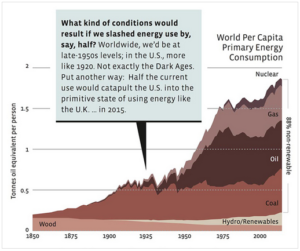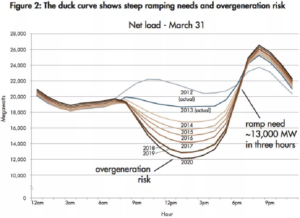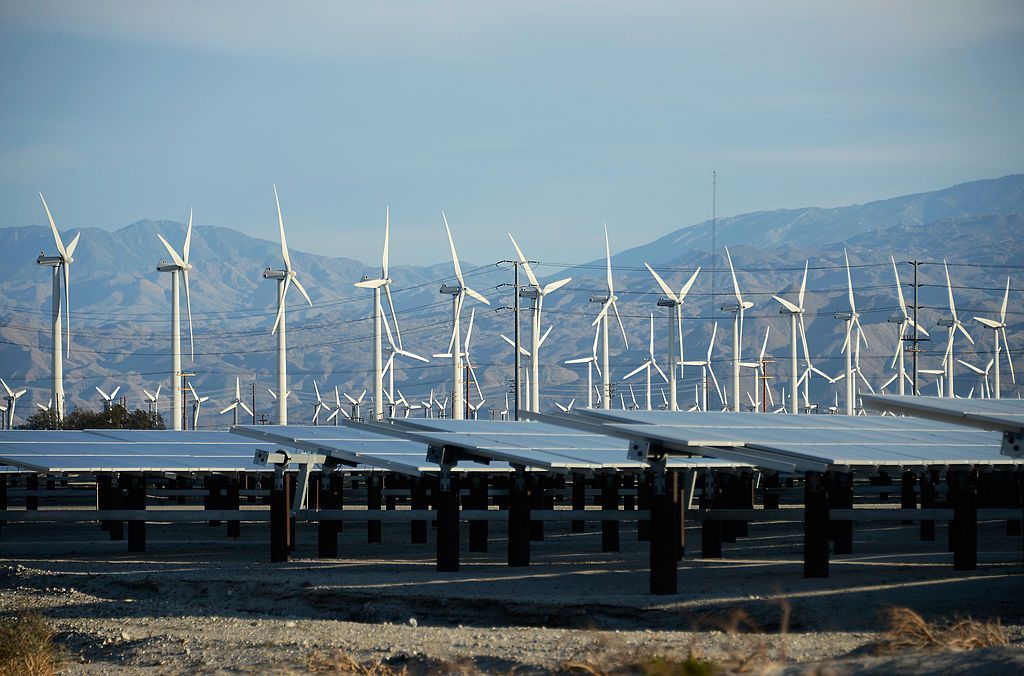“Imagine a world where 85% of all electricity comes from renewable sources, there are over one billion electric vehicles on the road, and we are on track to preserve a livable climate for our children and future generations. The International Renewable Energy Agency (IRENA) reported this week that such a future is not merely possible by 2050, but thanks to plummeting prices in key clean energy technologies, the cost of saving the climate has dropped dramatically. According to IRENA, the most cost-effective strategy to achieve a ‘climate-safe future’ is an accelerated energy transition to renewables and energy efficiency coupled with electrification of key sectors like transportation.” – Joe Romm, Global economy would save up to $160 trillion by shifting to renewables, electric cars.
The choice is to pay for climate protection by rapidly transitioning to renewables and electrification of everything, or pay increasingly for climate disasters. The National Oceanographic & Atmospheric Administration (NOAA) cost figures for 2017 climate disasters was $306 billion, a record high. NOAA said that since 1980, the total costs for climate disasters has been $150 trillion – 2017 Weather and Climate Disasters Cost U.S. Record $306 Billion. By comparison, the IRENA report projects that over the next 30 years, a Renewable Energy Roadmap (REmap) scenario “would save the global economy up to $160 trillion cumulatively”. IRENA reports that “every dollar spent on energy transition would pay off up to seven times”. At the same time, the REmap would achieve more than 90% of emissions reductions needed to keep warming below 2 degrees Celsius, by reversing the emissions curve 70% – Global energy transformation: A roadmap to 2050 (2019 edition).
Of course, the transition to a renewable energy economy should have begun 30 years ago, as folks like Amory Lovins, Donella Meadows, M. King Hubbert, and James Hansen had championed. But since we are in the current bind we are, Yes! Magazine has described a three phase transition that can make great strides within ten years, and almost a complete transition by 2050, while simultaneously reducing atmospheric carbon with each passing year. The first phase takes on the easy stuff, like solar and wind power for electricity instead of coal, rooftop solar with battery storage, walking and bicycling and transit, and electric vehicles (EVs). Add to that things that hadn’t emerged at the time of the 2016 Yes! article, such as the rapid development of EVs as battery storage for utilities, as well as utility scale battery banks to replace peak load generation by natural gas. And a move to more organic agriculture could significantly reduce much the 20% of emissions from petro-chemical fertilizers and pesticides, while sequestering enormous amounts of atmospheric carbon in topsoil. For some reason, the article overlooks the even larger potential of tree planting to capture atmospheric carbon.

Phase two tackles the more difficult stuff, like electrifying heavy transport by truck and rail and transit, converting to sail-powered ocean ships, and deglobalization of manufacturing to reduce the need for shipping. There are significant challenges in the manufacturing sector, though much of it already runs on electricity. Considerable effort will be needed to replace fossil fuel feedstocks for plastics and other petrochemicals, such as the emerging bio-based plastics. Mining and metals smelting pretty much require fossil fuels, so a strategy may be to reduce their need by “cradle-to-cradle” reuse and recycling programs.
And phase three addresses the really hard stuff. The second most common building material is concrete, which requires the high heat of fossil fuels to cook the portland cement. To convert to production by concentrating solar thermal or solar-derived hydrogen would require completely redesigning the process. The most difficult aspect of eliminating fossil fuels from agriculture is in the realm of mechanized field traction – plowing, discing, combining. Abandoning huge industrial farms in favor of smaller, more labor intensive organic farms will likely meet with resistance unless labor and pay equity are guarantied. The use of rare earth minerals and high heat processing for electronics and communications is a knotty problem, for which the best solution might be to make very durable and readily repaired products. And finding a light weight, energy dense power source for air transport is barely on the drawing boards – 100% Renewable Energy: What We Can Do in 10 Years – Yes! Magazine.
A sobering take-away lesson from the Yes! article is, “One way or another, the energy transition will represent an enormous societal shift. During past shifts, there were winners and losers. In the current instance, if we don’t pay great attention to equity issues, it is entirely possible that only the rich will have access to renewable energy”.

To achieve the practical goals listed in the Yes! article, a renewable energy future will need to electrify everything. The common perception from the coal electricity era has been that electricity is inherently dirty, and to be minimized. However, it’s possible, and it’s getting progressively more feasible to get electricity down to zero carbon through wind, solar, hydro, and geothermal (some falsely claim nuclear too – read the myth here – There is no such thing as a zero or near-zero-emission nuclear power plant). The same cannot yet be said of combustion fuels, even of biofuels that take an almost equivalent amount of fossil fuels to grow and process. Much of the research to electrify everything is focused on the electric grid – how to supply it with carbon free energy, and how to balance the ever-fluctuating solar and wind supply with the ever fluctuating user demand – as represented by the “duck curve energy demand cycle”. We won’t get into the details here, but the reading is fascinating at – The key to tackling climate change: electrify everything, and What Would the ‘Electrification of Everything’ Look Like in America?.


Recent Comments